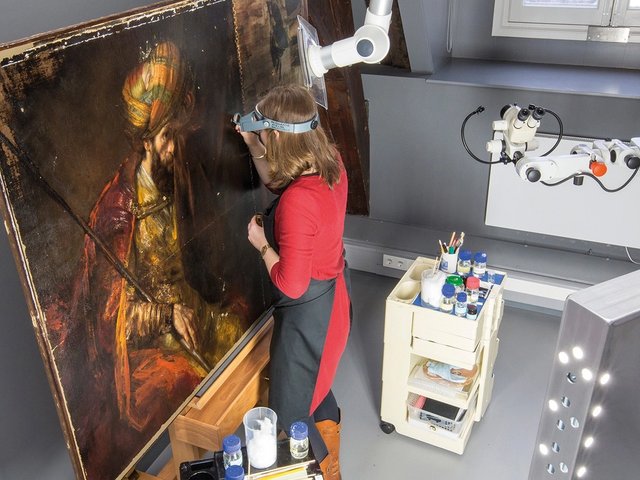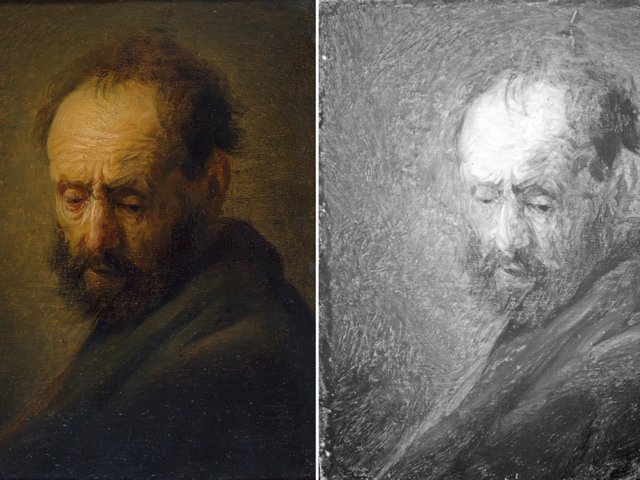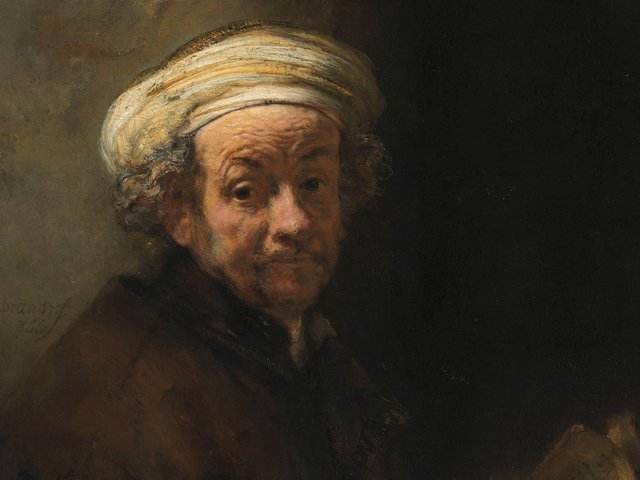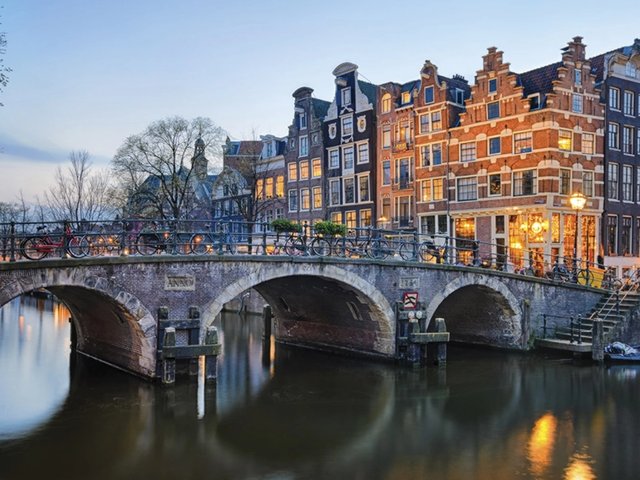Conservators at The Mauritshuis gallery in the Hague, Netherlands, say that three paintings in the museum’s collection initially attributed to Rembrandt van Rijn were probably made or copied by the 17th-century artist’s employees and students.
The museum owns seven works by the Dutch Old Master, along with seven paintings that were purchased as Rembrandts, but which have now been “written off or are strongly called into question”. Final verdicts, however, have so far only been issued for three works.
The first to be reassessed is the artist’s self-portrait, Portrait of Rembrandt with a Gorget (around 1629), which was acquired by William V, the Stadtholder of the Dutch Republic, in 1768.
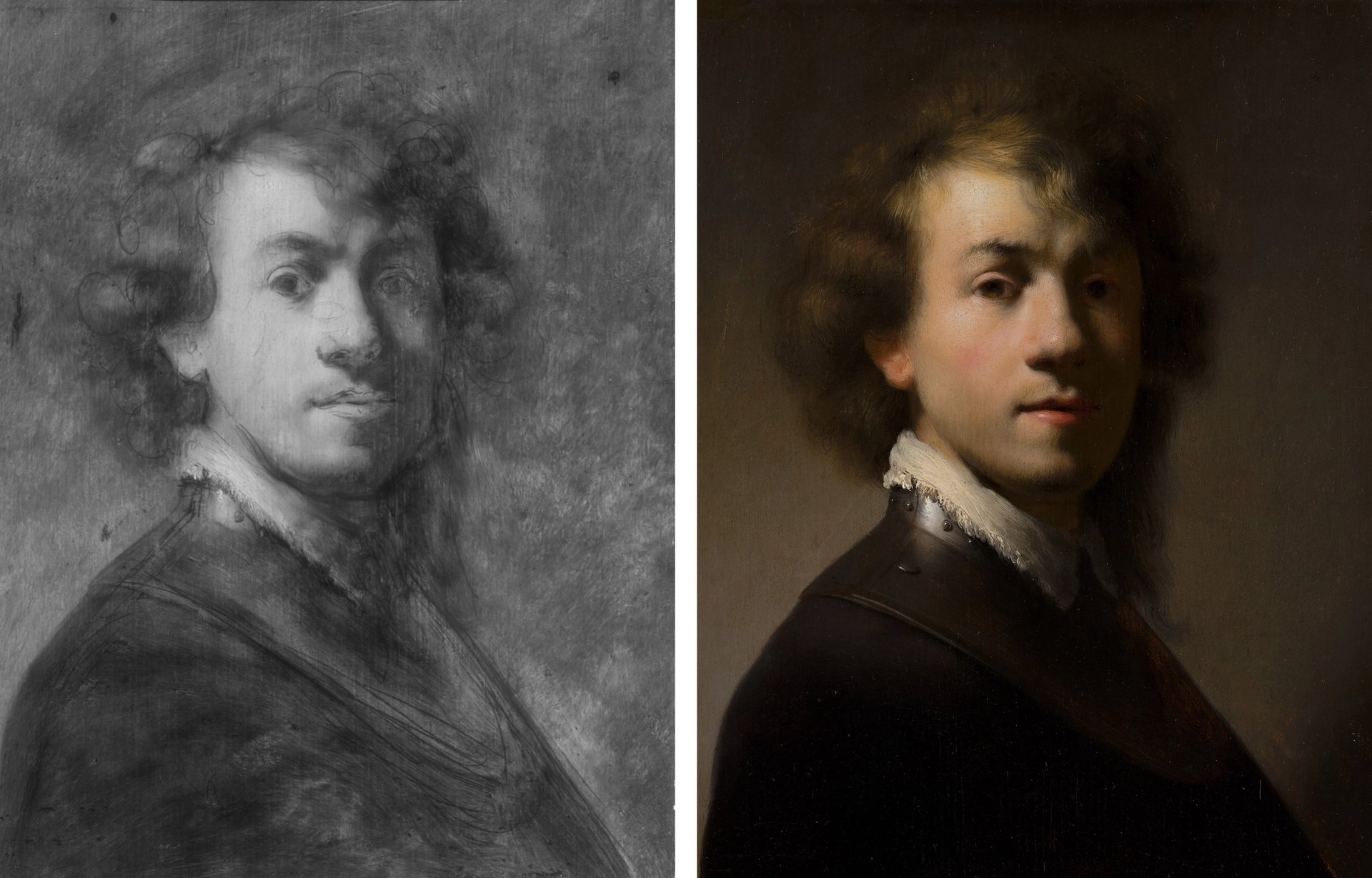
An underdrawing was discovered beneath Portrait of Rembrandt with a Gorget's layers of paint
Courtesy of The Mauritshuis gallery
“It all started with the discovery of an underdrawing beneath the paint layers. Nothing like that had ever been seen before in a work by Rembrandt,” the museum explains in a statement. “This prompted further investigation, and it was eventually found that our Rembrandt is the copy and the painting in Nuremberg [housed at the Germanisches Nationalmuseum] turned out to be the original by Rembrandt himself.”
The second work analysed was Tronie of an Old Man (around 1630). Abraham Bredius, the former director of the Mauritshuis, bought the painting for his own collection in 1892 but loaned it to the museum. Bredius referred to his acquisition as “probably the most interesting painting of Rembrandt’s father”, known as Harmen Gerritsz van Rijn.
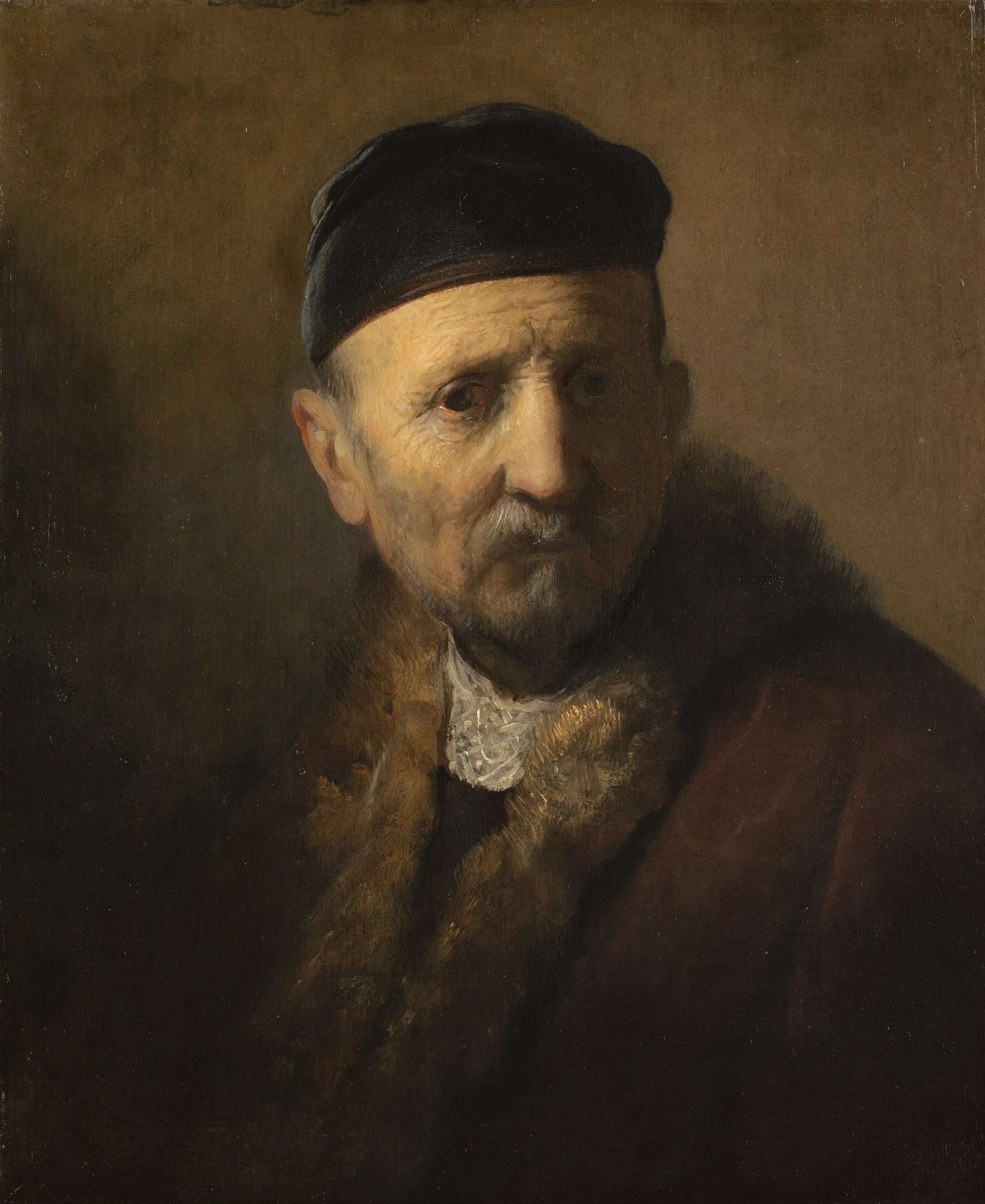
Tronie of an Old Man (around 1630), described as “probably the most interesting painting of Rembrandt’s father”
Courtesy of The Mauritshuis gallery
However, a drawing of Harmen Gerrits Van Rijn was unearthed showing him with a wide nose and a full beard, looking different from the father figure depicted in the painting. Further technical analysis also shows that the background was overpainted long after it was finished. The museum subsequently says that this work could be “by a student or employee of Rembrandt’s, or by the master himself. The mystery remains unsolved.”
The final piece, Study of an Old Man (around 1655), is the most intriguing work, as it is signed by Rembrandt. Bredius was “delighted” when the Mauritshuis purchased the painting, which depicts the artist’s brother Adriaen van Rijn, in 1891.
It was not unusual for a master to sign the work of a student, says the museum. “If it was painted at Rembrandt’s studio, it was his ‘product’. With Rembrandt’s signature, a painting by a student could be sold as if it were a piece by the master.”
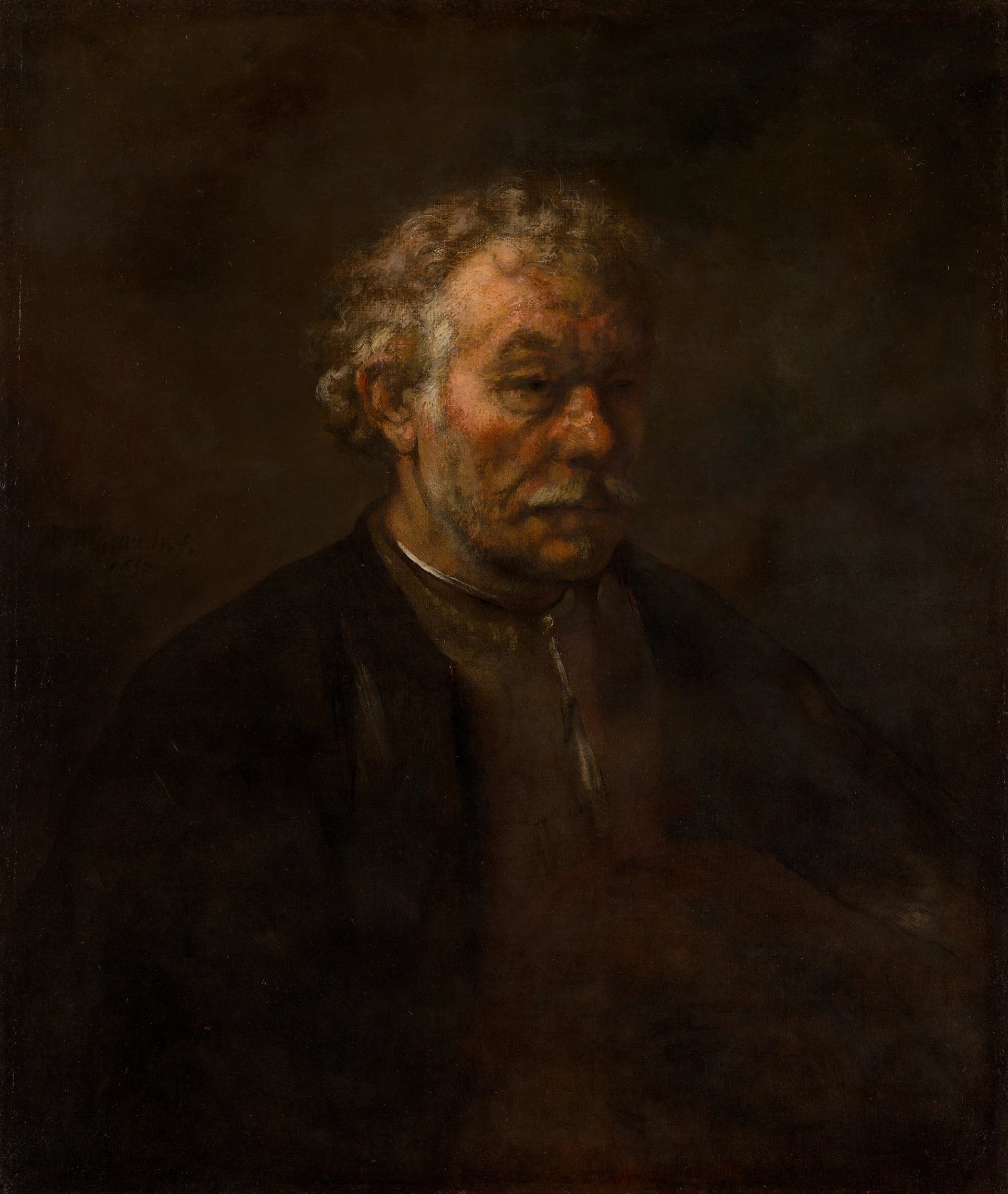
Study of an Old Man (around 1655) is signed by Rembrandt—although this doesn't rule out the work having been completed by his studio
Courtesy of The Mauritshuis gallery
The museum adds that during recent conservation work, restorers found that the date was applied later using a different paint, stressing that the year is not written in Rembrandt’s handwriting.
There are also technical issues. “If you look at Rembrandt’s Self-Portrait (1669) and Homer (1663) you will see that every brushstroke is just right. Study of an Old Man is less accomplished. We believe that it is the work of a student attempting to imitate the style of the master.”
All three paintings are on show in the exhibition Rembrandt? (17 April-13 July).



